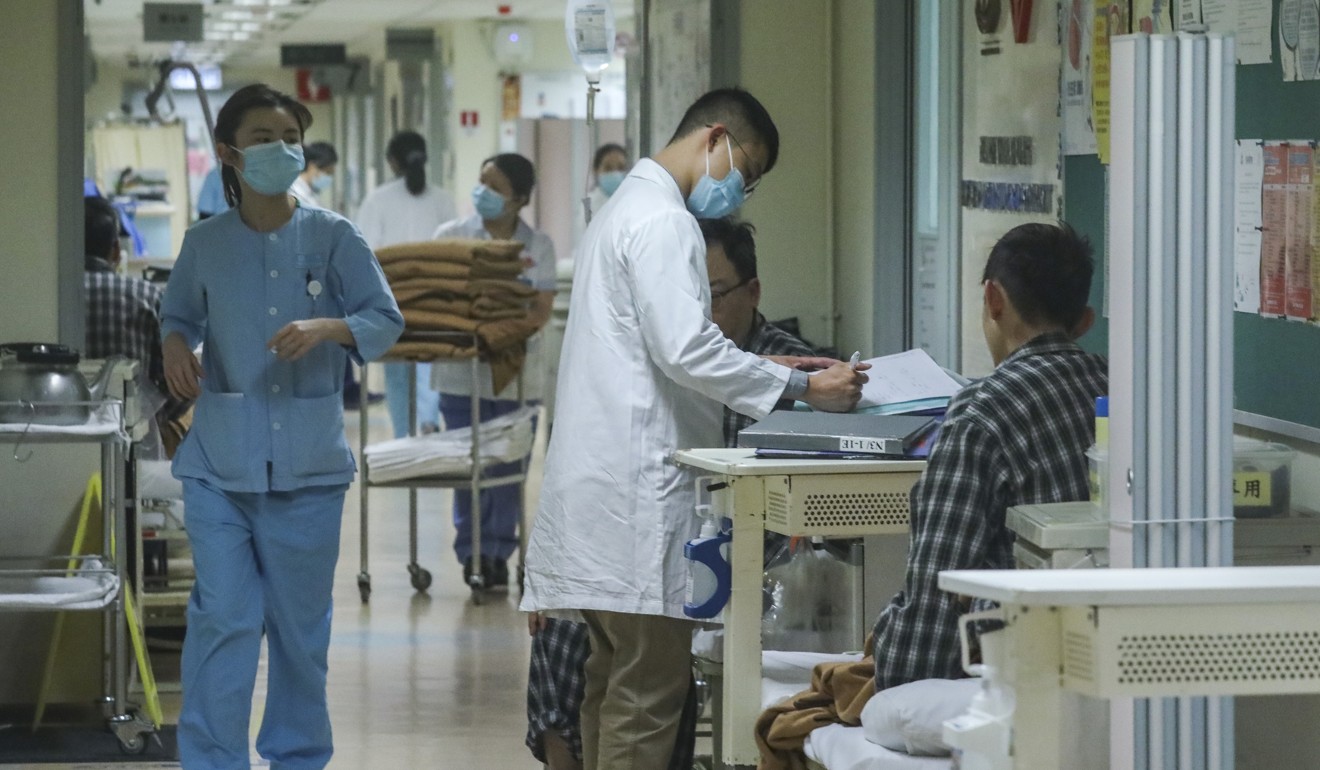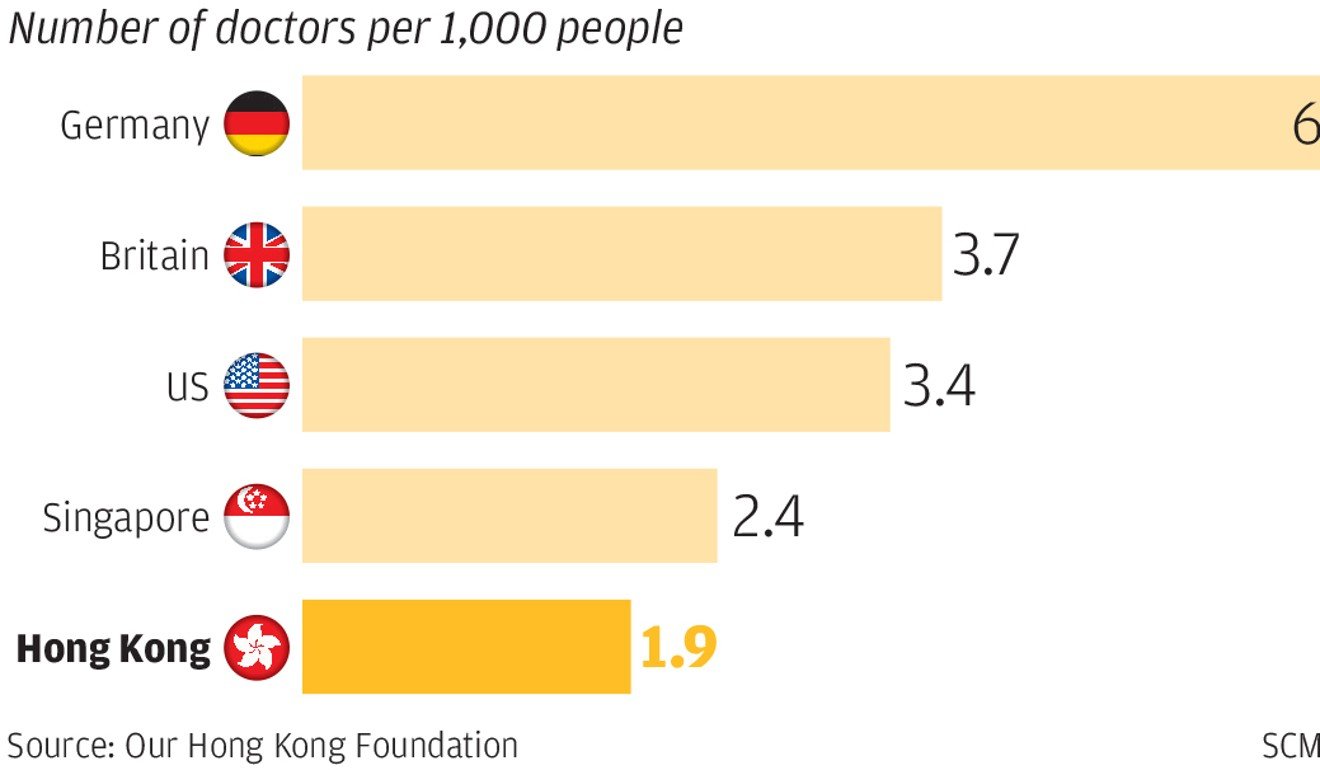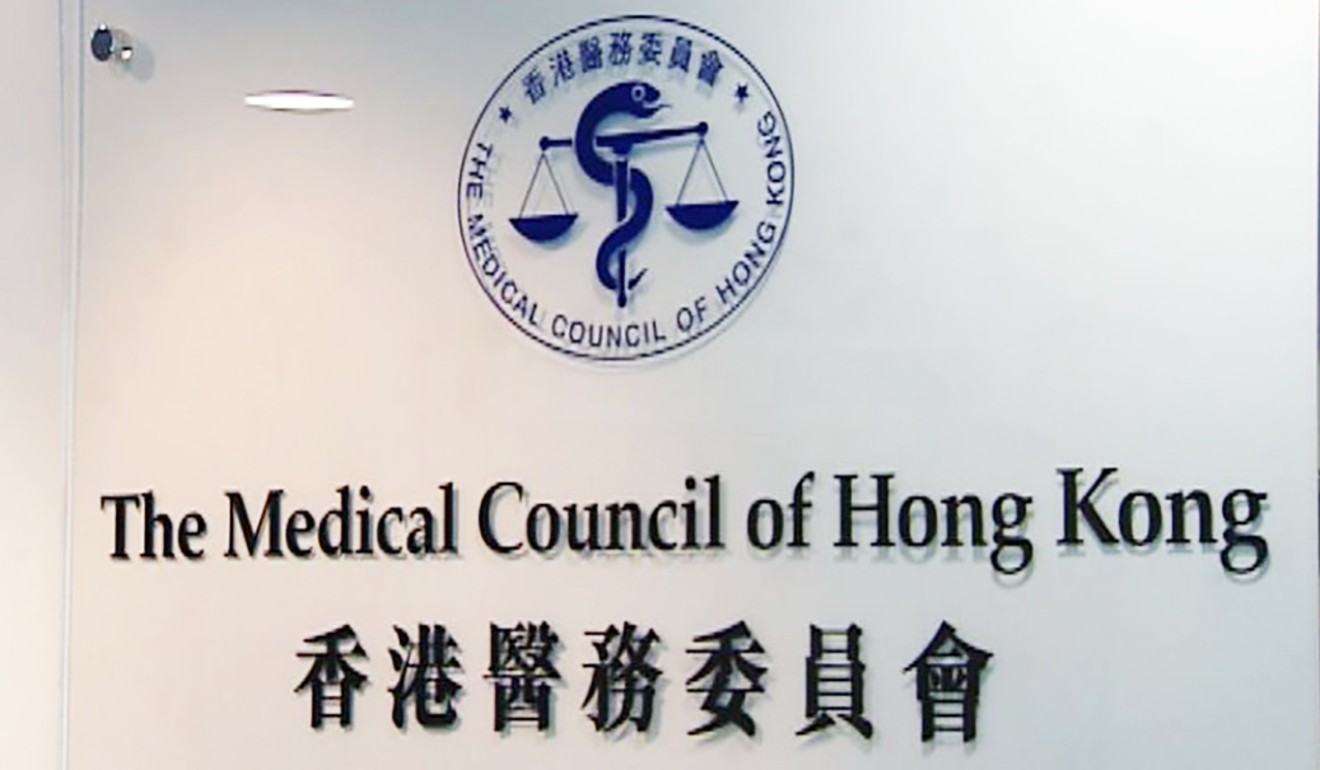
Hong Kong needs 11,000 more doctors to meet global standard, local think tank says
- City has 1.9 doctors per 1,000 residents, but development body advises 3.4
- Calls renewed for Medical Council to loosen restrictions on overseas doctors
Hong Kong needs nearly 11,000 more doctors to bring its public health services in line with international standards, according to a local think that has intensified the debate over recruiting foreign medical staff.
The Department of Health said that since the peak season began in January, 356 adults had died of influenza out of the 601 serious cases that were reported, and one child died among 24 serious flu cases involving children.

In its latest report, the think tank’s figures were more dire than the government’s official estimate, and suggested the shortage would get worse.
“Doctors are under a lot of pressure now. There is an urgent need to tackle the shortage. Otherwise, the problem is just going to get worse because of the ageing population,” said Stephen Wong Yuen-shan, the think tank’s deputy executive director.
There are about 14,290 doctors in Hong Kong, which works out to 1.9 doctors for every 1,000 residents. The Organisation for Economic Co-operation and Development (OECD), the Paris-based intergovernmental organisation, put the acceptable global standard at 3.4 doctors for every 1,000 citizens, according to the foundation.
By this count, Hong Kong would need nearly 11,000 more doctors to meet the OECD criteria.
In Singapore, the ratio is 2.4 doctors for every 1,000 citizens. The US has 3.4, Britain 3.7 and Germany six.

To meet Singapore’s standard, Hong Kong would need 3,376 additional doctors. To equal Germany, it would need more than 30,000.
“We need to overhaul the city’s medical system to brace for the challenges ahead,” Wong said.
By 2036, residents aged 65 or above will make up almost 30 per cent of the city’s population, compared with nearly 16 per cent in 2016, according to official figures.
People 65 years old or older use on average six times more inpatient medical care than younger people, according to the Food and Health Bureau.
In 2017, the bureau released a manpower projection report that said if the city was to maintain its current level of public medical service, the shortage of 285 doctors in 2016 would worsen to 500 by 2020 and more than 1,000 by 2030.
The projection did not calculate the shortage that would develop if Hong Kong tried to raise the current doctor-to-patient ratio to improve public health care.
Hong Kong health care is at breaking point - what’s the solution?
Professor Joseph Lau Wan-yee, the chairman of the Medical Council, said on Wednesday that because of the importance of the issue, he would propose in a meeting on May 8 that council members reconsider and ask them to vote on a proposal to relax requirements
The Society for Community Organisation, a local advocacy NGO, on Wednesday held a protest of about 15 people outside the council’s office. The group said the council had put local patients at risk by not addressing the chronic shortage of doctors.
At present, overseas-trained doctors who wish to practice in Hong Kong can do so by two ways.
If they want to obtain full registration to practice, they need to pass a three-part licensing exam organised by the Medical Council. In 2017, the think tank said, the passing rate for the written exam was 26.5 per cent, while the rate for the clinical exam was 42 per cent.

In the US, the passing rate for foreign doctors was higher than 70 per cent for the written exam and about 80 per cent for the clinical exam.
The think tank said the passing rate was low in Hong Kong partly because the council did not provide the overseas doctors with a detailed syllabus. Overseas doctors come into the exam knowing little about what they will be tested on.
The foundation suggested the council give overseas doctors a proper syllabus so they could prepare.
As it stands, the council requires overseas doctors to do internships before they are allowed to take the licensing exam. The think tank said this requirement should be scrapped because the doctors must do another internship after the exam anyway.
Overseas doctors who do not want to take the licensing exam in Hong Kong can still practice in the city, but they can only work at public hospitals and the two medical schools at the city’s universities.
Struggling public hospitals need a transfusion of doctors and nurses from overseas
The think tank suggested that overseas doctors who have already worked in the city for some years could become fully registered doctors without needing to take the exam.
“You can’t invite overseas doctors to come and not let them become fully registered doctors,” said Wong.
Dr Ho Chun-ping, president of the Hong Kong Medical Association, which represents more than 10,000 doctors, said international standards could be useful references for the city, but there was no need to blindly follow the suggested criteria.
For example, Ho said doctors in Australia needed to handle more paperworks than the doctors in Hong Kong and therefore the doctor-to-patient ratio had to be higher.

